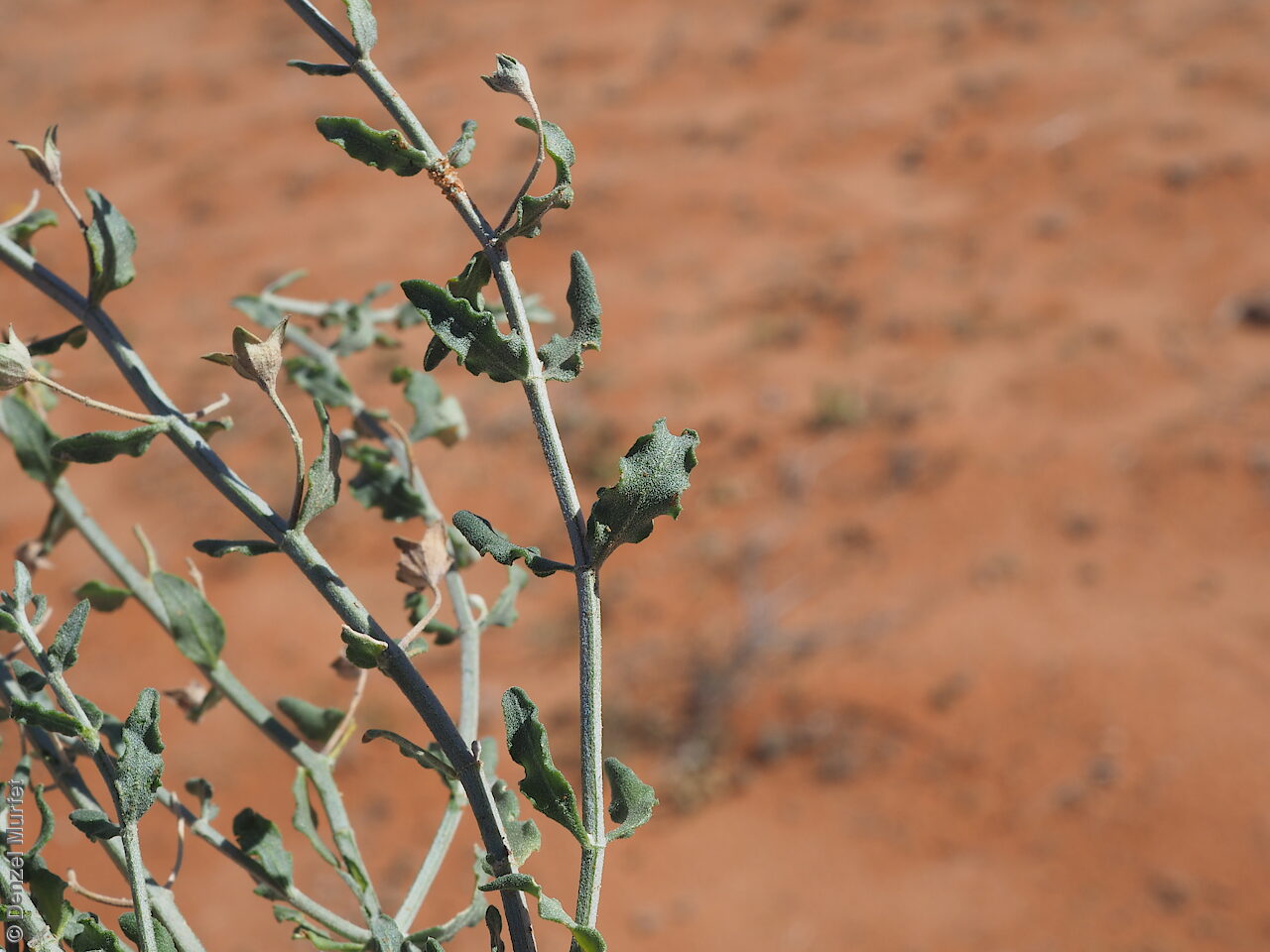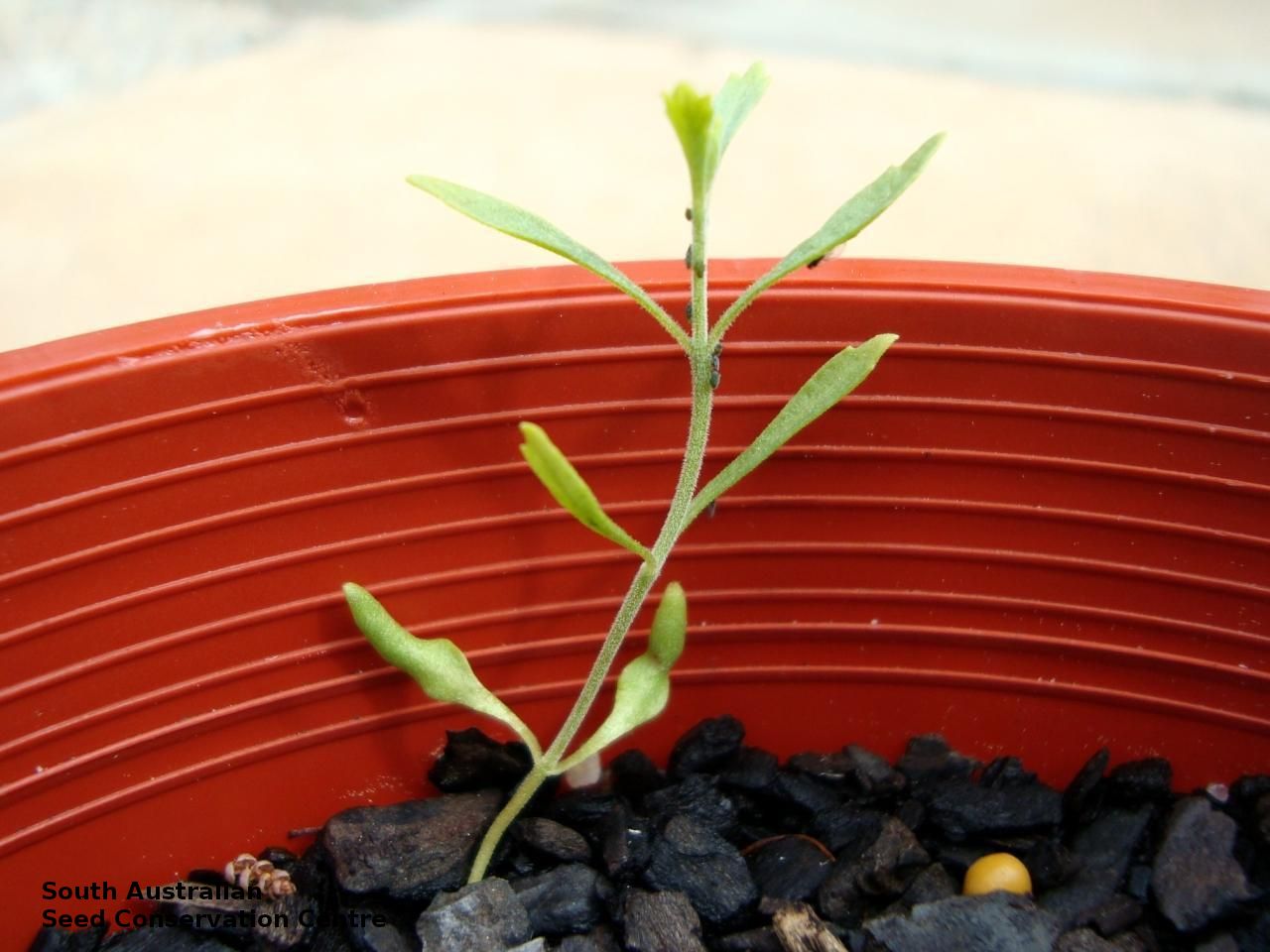Grey germander
Display all 16 images
















Regional Species Conservation Assessments per IBRA subregion.


Least concern
Near threatened
Rare
Vulnerable
Endangered
Critically endangered
Extinct
Data deficient
Adelaide
Arkaroola
Ceduna
Coober Pedy
Hawker
Innamincka
Marla
Marree
Mount Gambier
Oodnadatta
Renmark
Wudinna
Keith
Yunta
Display IBRA region text
| Lucindale (NCP03) | Naracoorte Coastal Plain | Rare (IUCN: RA d(i,ii)) [edge of range] |
| Fleurieu (KAN02) | Kanmantoo | Rare (IUCN: RA d(i,ii)) [outlier; sth edge of range; likes disturbance; undercollected] |
| Mount Lofty Ranges (FLB01) | Flinders Lofty Block | Rare (IUCN: RA d(ii)) (Probable Decline) [small pops, could be VU] |
| Broughton (FLB02) | | Least Concern |
| Olary Spur (FLB03) | | Least Concern |
| Southern Flinders (FLB04) | | Least Concern |
| Northern Flinders (FLB05) | | Least Concern |
| Central Flinders (FLB06) | | Least Concern |
| Southern Yorke (EYB01) | Eyre Yorke Block | Rare (IUCN: RA d(i,ii)) (Definite Decline) |
| St Vincent (EYB02) | | Least Concern |
| Eyre Hills (EYB03) | | Rare (IUCN: RA d(ii)) |
| Talia (EYB04) | | Rare (IUCN: RA d(i,ii)) |
| Eyre Mallee (EYB05) | | Rare (IUCN: RA d(i,ii)) (Probable Decline) |
| South Olary Plain (MDD01) | Murray Darling Depression | Least Concern [comes up after rain] |
| Murray Mallee (MDD02) | | Least Concern [comes up after rain] |
| Lowan Mallee (MDD04) | | Near Threatened [comes up after rain] |
| Wimmera (MDD05) | | Least Concern [persists on roadsides & grazed blocks] |
| Braemer (MDD07) | | Least Concern |
| Murray Scroll Belt (RIV06) | Riverina | Least Concern [comes up after rain] |
| Myall Plains (GAW01) | Gawler | Least Concern |
| Gawler Volcanics (GAW02) | | Least Concern |
| Gawler Lakes (GAW03) | | Least Concern |
| Arcoona Plateau (GAW04) | | Least Concern |
| Kingoonya (GAW05) | | Least Concern |
| Torrens (GAW06) | | Least Concern |
| Roxby (GAW07) | | Least Concern |
| Commonwealth Hill (GAW08) | | Least Concern |
| Kintore (GVD04) | Great Victoria Desert | Least Concern |
| Tallaringa (GVD05) | | Least Concern |
| Barrier Range (BHC01) | Broken Hill Complex | Least Concern |
| Barrier Range Outwash (BHC04) | | Least Concern |
| Curnamona (BHC06) | | Least Concern |
| Dieri (SSD03) | Simpson Strzelecki Dunefields | Least Concern |
| Warriner (SSD04) | | Least Concern |
| Strzelecki Desert (SSD05) | | Least Concern |
| Breakaways (STP01) | Stony Plains | Least Concern |
| Oodnadatta (STP02) | | Least Concern |
| Murnpeowie (STP03) | | Least Concern |
| Macumba (STP05) | | Least Concern |
| Witjira (STP06) | | Least Concern |
| Baltana (STP07) | | Least Concern |
| Sturt Stony Desert (CHC02) | Channel Country | Least Concern |
| Diamantina-Eyre (CHC04) | | Least Concern |
| Coongie (CHC06) | | Least Concern |
| Lake Pure (CHC07) | | Least Concern |
| Mann-Musgrave Block (CER01) | Central Ranges | Least Concern |
| Everard Block (CER03) | | Least Concern |
| Lucindale (NCP03) | Naracoorte Coastal Plain | Rare (IUCN: RA d(i,ii)) [edge of range] |
| Fleurieu (KAN02) | Kanmantoo | Rare (IUCN: RA d(i,ii)) [outlier; sth edge of range; likes disturbance; undercollected] |
| 6 of 6 subregions | Flinders Lofty Block | Least Concern , Rare |
| 5 of 5 subregions | Eyre Yorke Block | Least Concern , Rare |
| 5 of 6 subregions | Murray Darling Depression | Least Concern , Near Threatened |
| Murray Scroll Belt (RIV06) | Riverina | Least Concern [comes up after rain] |
| 8 of 8 subregions | Gawler | Least Concern |
| 2 of 4 subregions | Great Victoria Desert | Least Concern |
| 3 of 4 subregions | Broken Hill Complex | Least Concern |
| 3 of 4 subregions | Simpson Strzelecki Dunefields | Least Concern |
| 6 of 7 subregions | Stony Plains | Least Concern |
| 4 of 4 subregions | Channel Country | Least Concern |
| 2 of 3 subregions | Central Ranges | Least Concern |
Botanical art
Kath Alcock paintings: 2
Prior names
Teucrium racemosum var. triflorum
Etymology
Teucrium from the Greek teucrion, name used by Dioscorides possibly after Teucer, a Trojan king who used the plant as a medicine. Racemosum refers to the flowers in racemes (undivided axis or peduncle bearing flowers).
Distribution and status
Found across South Australia except for Kangaroo Island and the Far West. Also occurs in Western Australia, Northern Territory, Queensland, New South Wales and Victoria. Common in South Australia. Common in the other states.
Herbarium regions: North Western, Lake Eyre, Gairdner-Torrens, Flinders Ranges, Eastern, Eyre Peninsula, Northern Lofty, Murray, Yorke Peninsula, Southern Lofty, South Eastern, Green Adelaide
NRM regions: Adelaide and Mount Lofty Ranges, Alinytjara Wilurara, Eyre Peninsula, Northern and Yorke, South Australian Arid Lands, South Australian Murray-Darling Basin, South East
AVH map: SA distribution map (external link)
Plant description
Perennial shrub to 50cm tall with quadrangular stems covered in white hairs. Leaves are lance-shaped with wavy margins. Flowers are large and white with five petals, one larger at the bottom. Flowers most of the year. Fruits are capsules with up to four segments, each containing a seed. Seeds are small pale brown convex seeds less than 2mm long, covered in hairs and with a plug at one end. Seed embryo type is spatulate fully developed.
Seed collection and propagation
Collect seeds between September and April. Collect capsules that are large, hard and turning brown. These will contain developed seeds. Collect more than required as some of the seeds will be empty and not viable. Place the capsules in a tray and leave to dry for a week. Then rub the capsules gently with a rubber bung to dislodge the seeds from the capsules. Use a sieve to separate the unwanted material. Some seeds will be empty. Use an aspirator to siphon off the lighter, non-viable seeds from the heavier good seeds. Store the seeds with a desiccant such as dried silica beads or dry rice, in an air tight container in a cool and dry place.
Germination table:
Display















